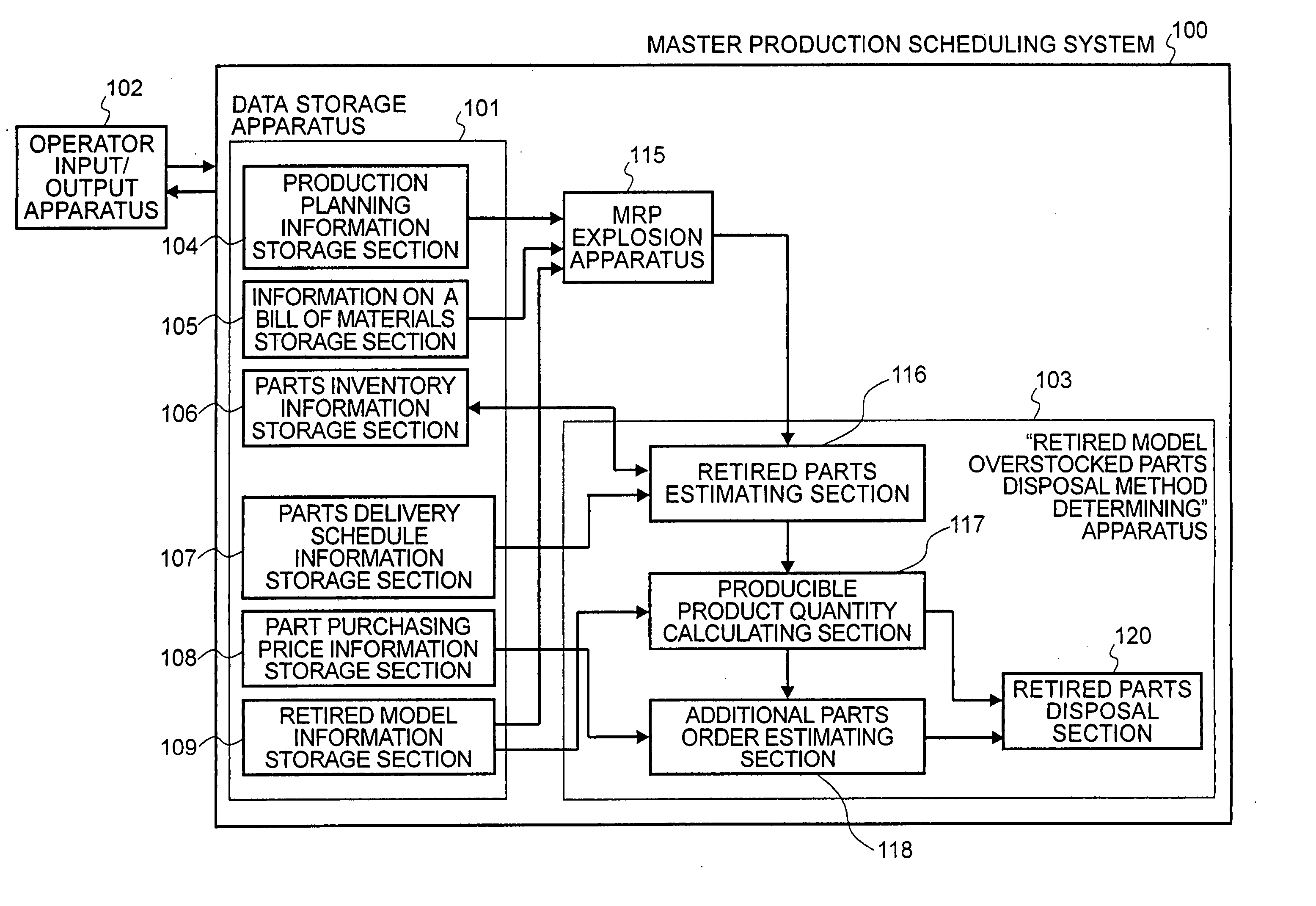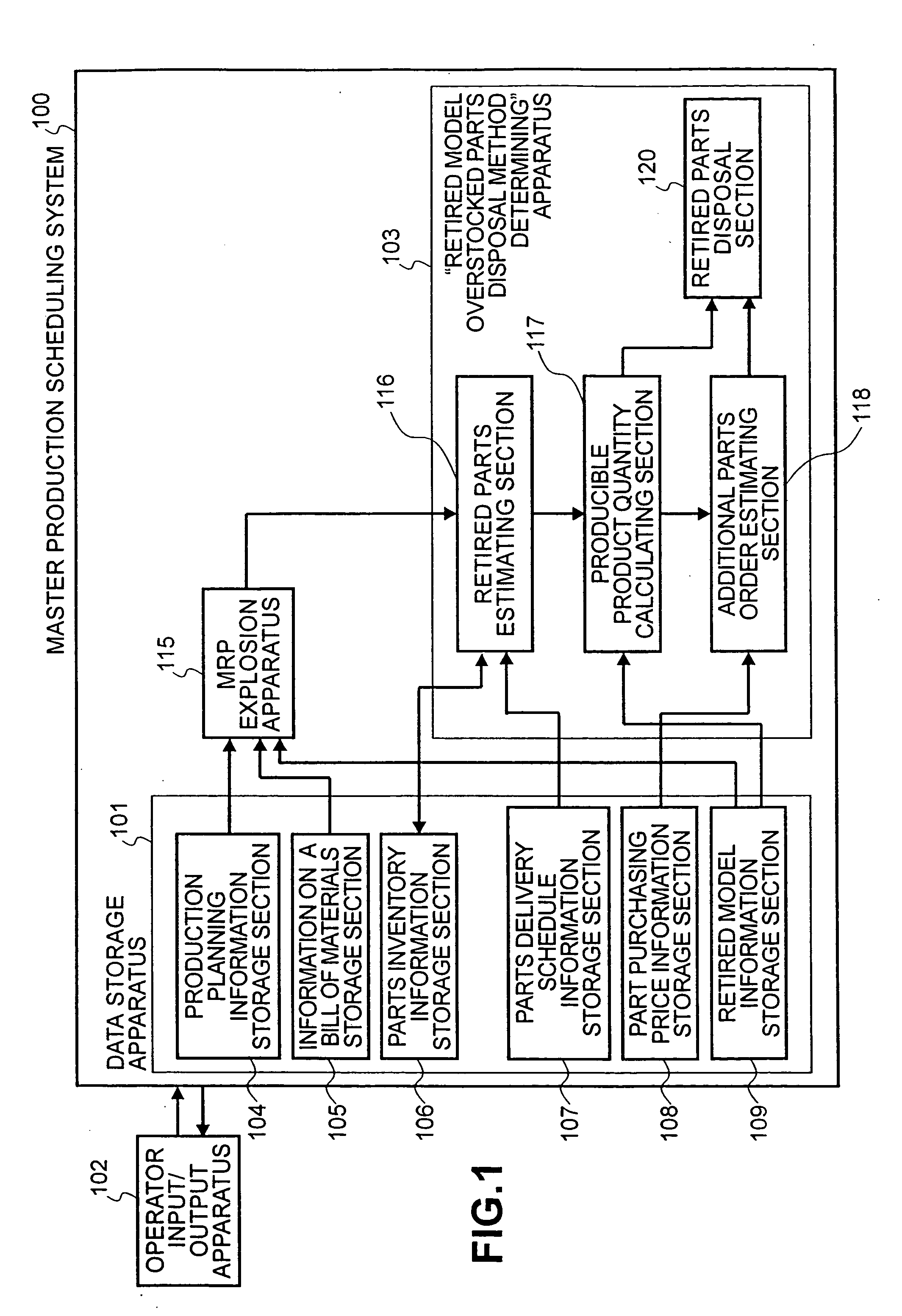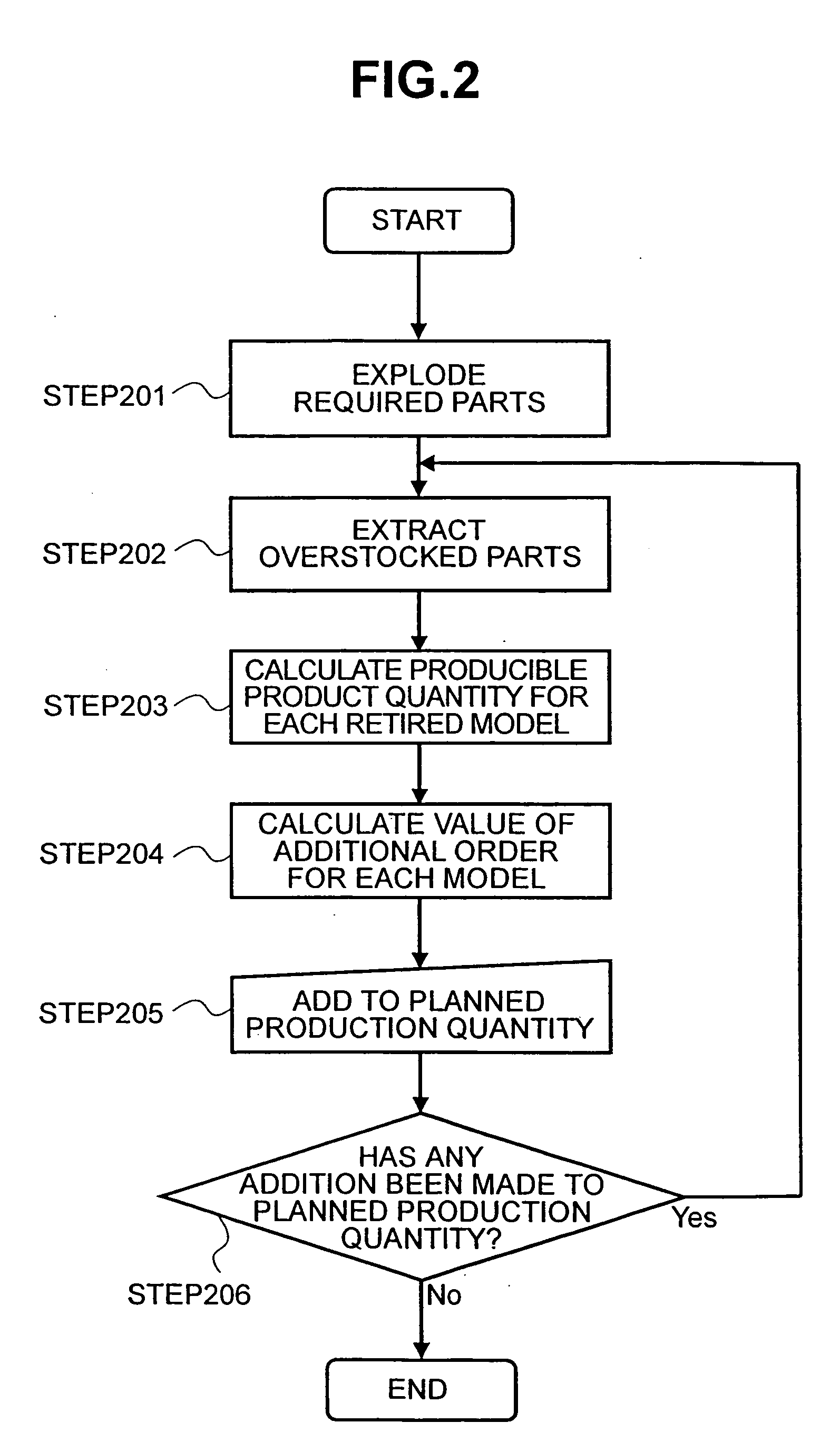Production scheduling system
a production scheduling and scheduling system technology, applied in the field of master production scheduling system, can solve the problems of increasing the total cost, increasing the loss, and maximizing the cash flow of conventional techniques, so as to minimize the value of additional orders, maximize profits, and minimize losses
- Summary
- Abstract
- Description
- Claims
- Application Information
AI Technical Summary
Benefits of technology
Problems solved by technology
Method used
Image
Examples
Embodiment Construction
[0078]FIG. 1 shows a functional configuration of a master production scheduling system according to the present invention. As shown in FIG. 1, a master production scheduling system 100 of the present invention comprises an MRP explosion apparatus 115, a “retired model overstocked parts disposal method determining” apparatus 103, and a data storage apparatus 101. It should be noted that the master production scheduling system may comprise an operator input / output apparatus 102.
[0079] The above data storage apparatus 101 comprises: a production planning information storage section 104 for storing production plans drafted beforehand; a information on a bill of materials storage section 105 for storing a component parts list and production lead time (time required for manufacturing a product from its component parts) for each product; a parts inventory information storage section 106 for storing the current inventory state of each part; a parts delivery schedule storage section 107 for...
PUM
 Login to View More
Login to View More Abstract
Description
Claims
Application Information
 Login to View More
Login to View More - R&D
- Intellectual Property
- Life Sciences
- Materials
- Tech Scout
- Unparalleled Data Quality
- Higher Quality Content
- 60% Fewer Hallucinations
Browse by: Latest US Patents, China's latest patents, Technical Efficacy Thesaurus, Application Domain, Technology Topic, Popular Technical Reports.
© 2025 PatSnap. All rights reserved.Legal|Privacy policy|Modern Slavery Act Transparency Statement|Sitemap|About US| Contact US: help@patsnap.com



